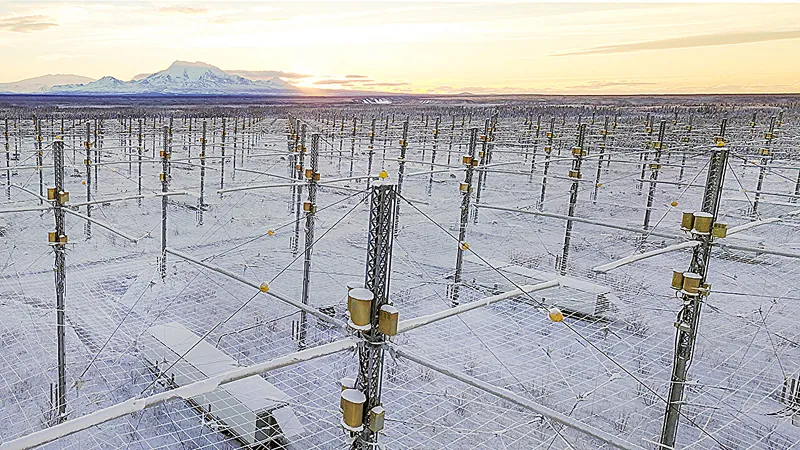
Unlocking the Secrets of Earth’s Ionosphere: How Radio Waves Reveal Hidden Mysteries
2025-06-17
Author: William
Exploring the Ionosphere: Earth's Mysterious Upper Atmosphere
Suspended 50 to 1,000 kilometers above us lies an enigmatic region known as the ionosphere, teeming with charged particles like ions and free electrons. This dynamic layer plays a crucial role in our communication and navigation systems by altering the paths of radio and GPS signals. Understanding its behavior is vital for enhancing these technologies.
The Power of Radio Waves in Scientific Discovery
To delve deeper into the ionosphere's secrets, researchers employ an innovative technique: 'nudging' it with powerful radio waves from the ground. When these waves penetrate the ionosphere, they temporarily heat the region, causing charged particles to scatter in irregular patterns. Scientists call these disturbances artificial periodic inhomogeneities (APIs), and studying them provides invaluable insights into the ionosphere's composition and behavior.
Breaking New Ground: A Fresh Look at API Formation
Despite the wealth of information APIs hold, external factors like solar activity can complicate their formation and detection. A groundbreaking study published in Radio Science, led by researchers La Rosa and Hysell, aims to boost the reliability of API research by investigating their formation across all three key regions of the ionosphere: the D, E, and F regions. Previously, most studies focused only on the E region.
The HAARP Experiment: A Closer Look at 2014 Data
The team revisited groundbreaking data from an experiment conducted in April 2014 at the High-frequency Active Auroral Research Program (HAARP) facility in Alaska. Here, powerful radio transmitters created slight disturbances in the ionosphere, while receivers measured the resulting scattered radio signals. Initial analyses identified some APIs in the E region, but the researchers’ reprocessing of the data at a higher resolution unveiled simultaneous API occurrences across all three regions, a first for this field of study.
Unlocking the Diverse Mechanisms of API Formation
API formation varies across the ionosphere's regions, influenced by a mix of chemical interactions, heating effects, and density changes among charged particles. This complexity has made it challenging to develop a unified model of API formation. However, the research team has taken significant strides in overcoming this hurdle by extending a model that initially focused on the E region. By incorporating mechanisms relevant to the D and F regions, their simulations accurately mirrored the behaviors observed in all three areas.
A New Era of Ionospheric Research Begins
This innovative model represents a leap forward in understanding the physics behind ionospheric behavior, promising to enhance our comprehension of this vital atmospheric layer. As researchers continue to uncover the mysteries of the ionosphere, we can expect improvements in communication technology and a deeper grasp of our planet’s atmospheric dynamics.









 Brasil (PT)
Brasil (PT)
 Canada (EN)
Canada (EN)
 Chile (ES)
Chile (ES)
 Česko (CS)
Česko (CS)
 대한민국 (KO)
대한민국 (KO)
 España (ES)
España (ES)
 France (FR)
France (FR)
 Hong Kong (EN)
Hong Kong (EN)
 Italia (IT)
Italia (IT)
 日本 (JA)
日本 (JA)
 Magyarország (HU)
Magyarország (HU)
 Norge (NO)
Norge (NO)
 Polska (PL)
Polska (PL)
 Schweiz (DE)
Schweiz (DE)
 Singapore (EN)
Singapore (EN)
 Sverige (SV)
Sverige (SV)
 Suomi (FI)
Suomi (FI)
 Türkiye (TR)
Türkiye (TR)
 الإمارات العربية المتحدة (AR)
الإمارات العربية المتحدة (AR)